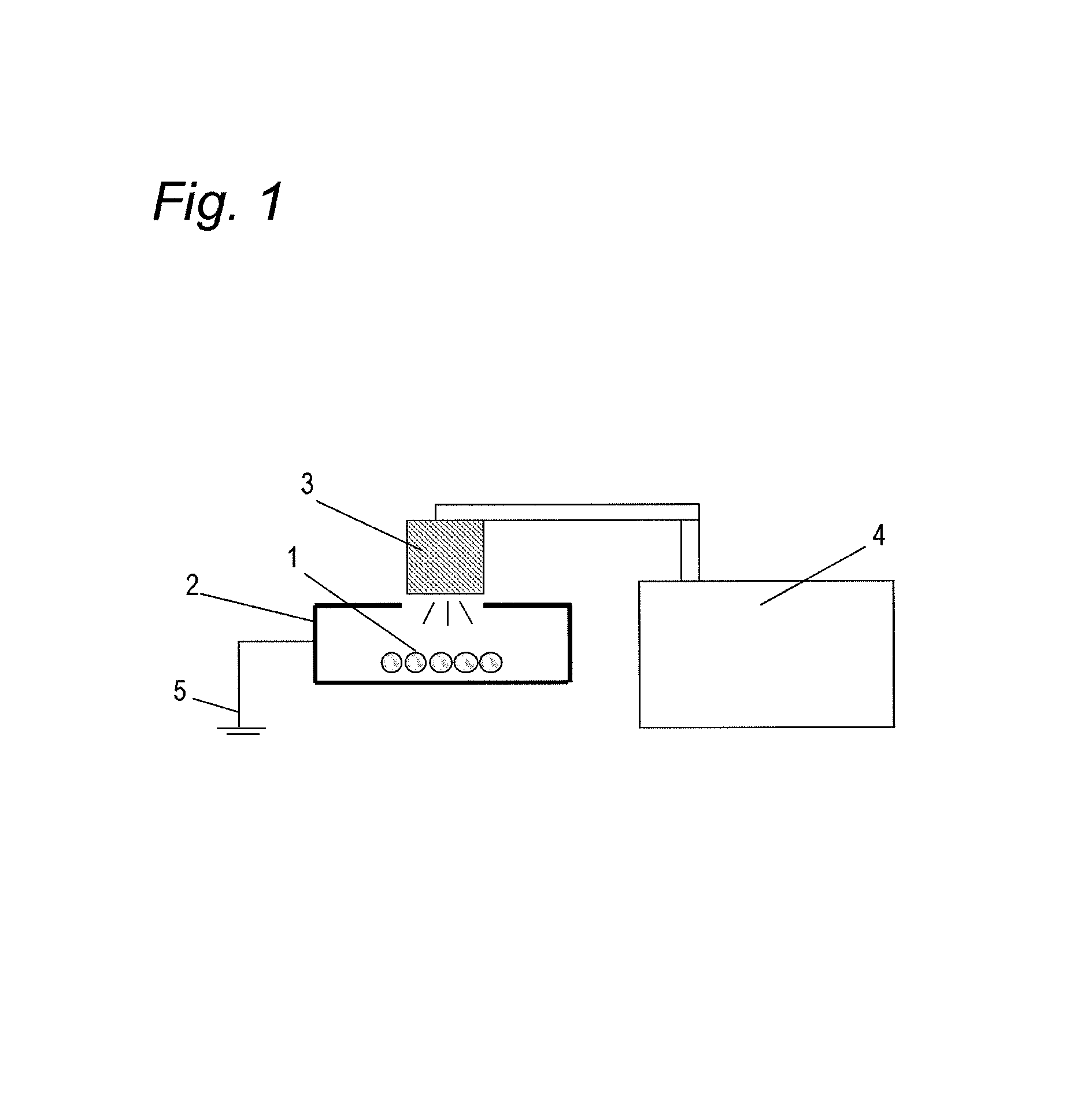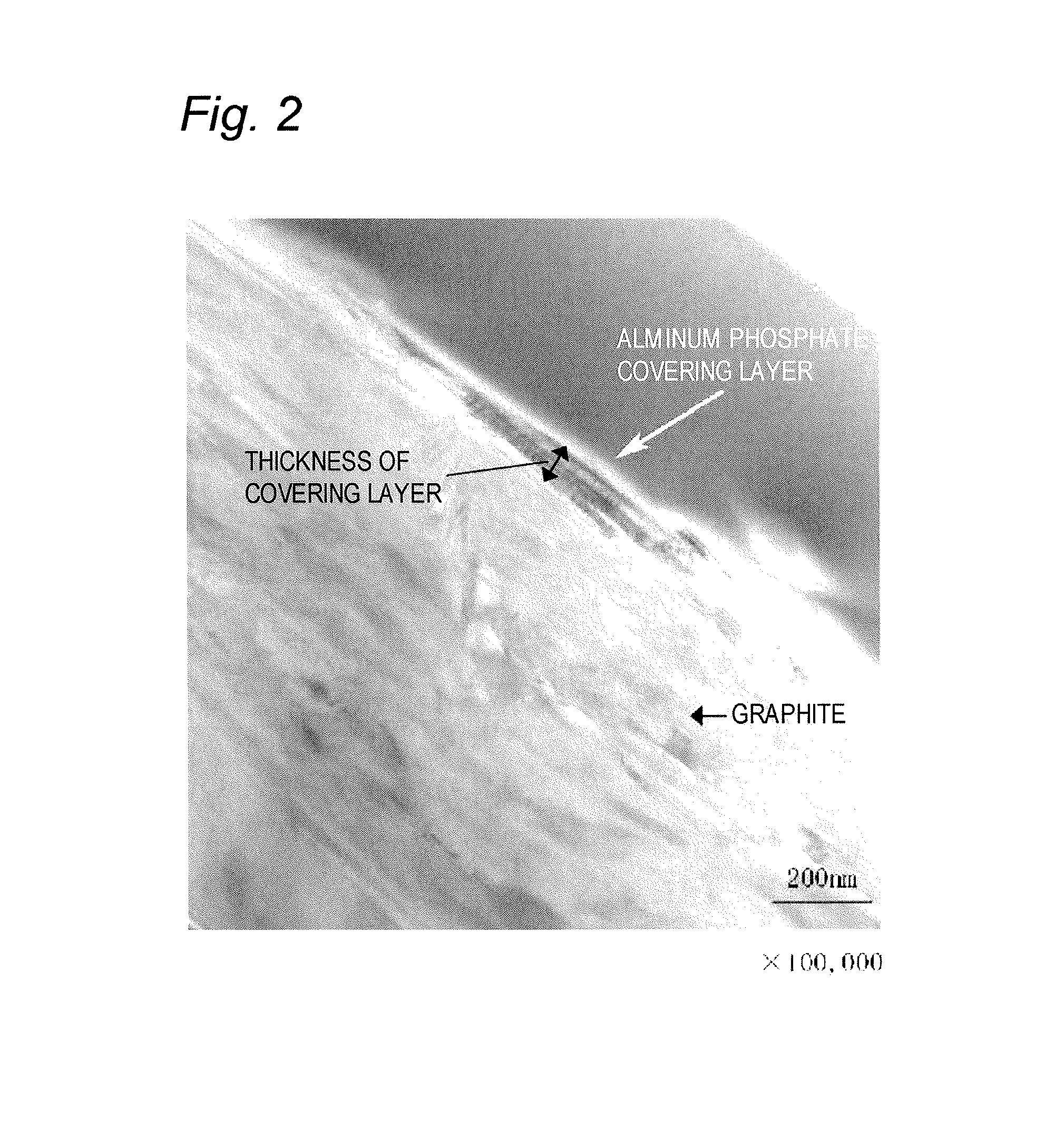Solid lubricant and production method thereof
a technology of solid lubricant and production method, which is applied in the direction of lubricant composition, petroleum industry, base materials, etc., can solve the problems of insufficient non-asbestos brake friction materials, affecting the development of solid lubricants with satisfactory lubricating characteristics in the high-temperature range, and affecting the lubricating performance of solid lubricants, so as to improve thermal resistance and oxidation resistance, and efficiently produce solid lubri
- Summary
- Abstract
- Description
- Claims
- Application Information
AI Technical Summary
Benefits of technology
Problems solved by technology
Method used
Image
Examples
example 1
[0067]Aluminum dihydrogen phosphate was dissolved in pure water to prepare an aqueous solution having a concentration of 1% by mass. To 100 parts by mass of this aqueous solution, 42 parts by mass of artificial graphite (manufactured by Tokai Carbon Co., Ltd., trade name: “G152A”, average particle size: 700 μm) was added, followed by stirring at a temperature of 50° C. for 1 hour by using a rotary vane stirrer (manufactured by AS ONE Corporation, model name: “PM-203”).
[0068]The resultant mixture was dried in the atmosphere for 24 hours and cracked, followed by heat treatment in vacuum at 800° C. for 3 hours. After the heat treatment, the cracked mixture was pulverized in a mortar to obtain a solid lubricant of Example 1 comprising graphite powder in which particle surfaces were coated with aluminum dihydrogen phosphate.
[0069]A transmission electron microscope (TEM) photograph of this solid lubricant is shown in FIG. 2, Incidentally, the thickness of a phosphate covering layer was 50...
examples 2 to 4
[0070]In the same manner as in Example 1, aqueous solutions having aluminum dihydrogen phosphate concentrations of 0.5%, 5% and 10% by mass were prepared, and the artificial graphite (described above) was treated to obtain solid lubricants of Examples 2 to 4 comprising graphite powder in which particle surfaces were coated with aluminum dihydrogen phosphate.
example 5
[0071]A solid lubricant of Example 5 comprising graphite powder in which particle surfaces were coated with magnesium dihydrogen phosphate was obtained in the same manner as in Example 1 with the exception that an aqueous solution having a concentration of 1% by mass was prepared using magnesium dihydrogen phosphate in place of aluminum dihydrogen phosphate.
PUM
| Property | Measurement | Unit |
|---|---|---|
| thickness | aaaaa | aaaaa |
| temperature | aaaaa | aaaaa |
| temperature | aaaaa | aaaaa |
Abstract
Description
Claims
Application Information
 Login to View More
Login to View More - R&D
- Intellectual Property
- Life Sciences
- Materials
- Tech Scout
- Unparalleled Data Quality
- Higher Quality Content
- 60% Fewer Hallucinations
Browse by: Latest US Patents, China's latest patents, Technical Efficacy Thesaurus, Application Domain, Technology Topic, Popular Technical Reports.
© 2025 PatSnap. All rights reserved.Legal|Privacy policy|Modern Slavery Act Transparency Statement|Sitemap|About US| Contact US: help@patsnap.com



